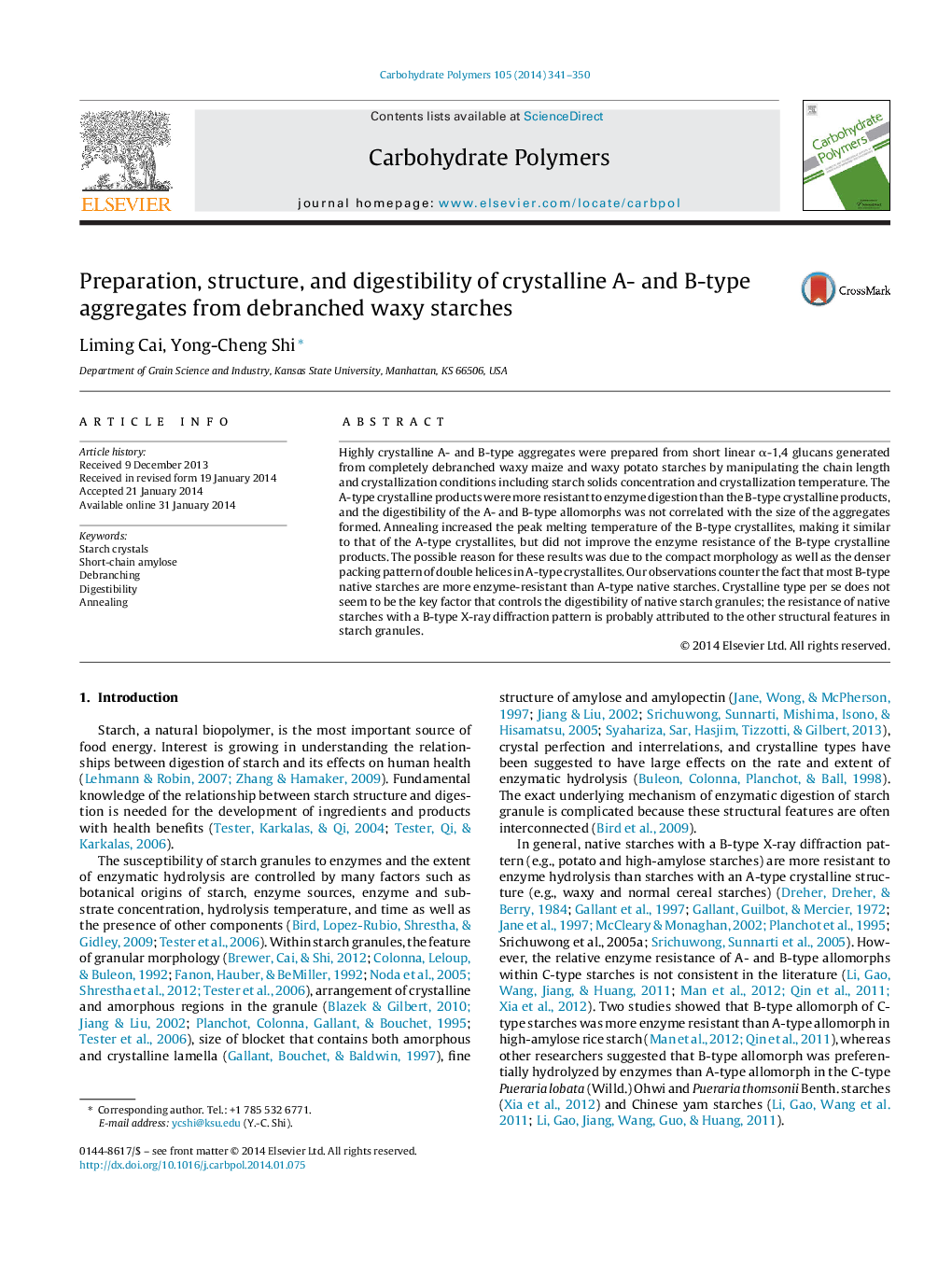| Article ID | Journal | Published Year | Pages | File Type |
|---|---|---|---|---|
| 1386070 | Carbohydrate Polymers | 2014 | 10 Pages |
•Short linear α-1,4 glucans were made from debranched waxy maize and waxy potato starches.•Highly crystalline A- and B-type aggregates were prepared via three approaches.•A-type aggregates were more enzyme resistant than their B-type counterparts.
Highly crystalline A- and B-type aggregates were prepared from short linear α-1,4 glucans generated from completely debranched waxy maize and waxy potato starches by manipulating the chain length and crystallization conditions including starch solids concentration and crystallization temperature. The A-type crystalline products were more resistant to enzyme digestion than the B-type crystalline products, and the digestibility of the A- and B-type allomorphs was not correlated with the size of the aggregates formed. Annealing increased the peak melting temperature of the B-type crystallites, making it similar to that of the A-type crystallites, but did not improve the enzyme resistance of the B-type crystalline products. The possible reason for these results was due to the compact morphology as well as the denser packing pattern of double helices in A-type crystallites. Our observations counter the fact that most B-type native starches are more enzyme-resistant than A-type native starches. Crystalline type per se does not seem to be the key factor that controls the digestibility of native starch granules; the resistance of native starches with a B-type X-ray diffraction pattern is probably attributed to the other structural features in starch granules.
